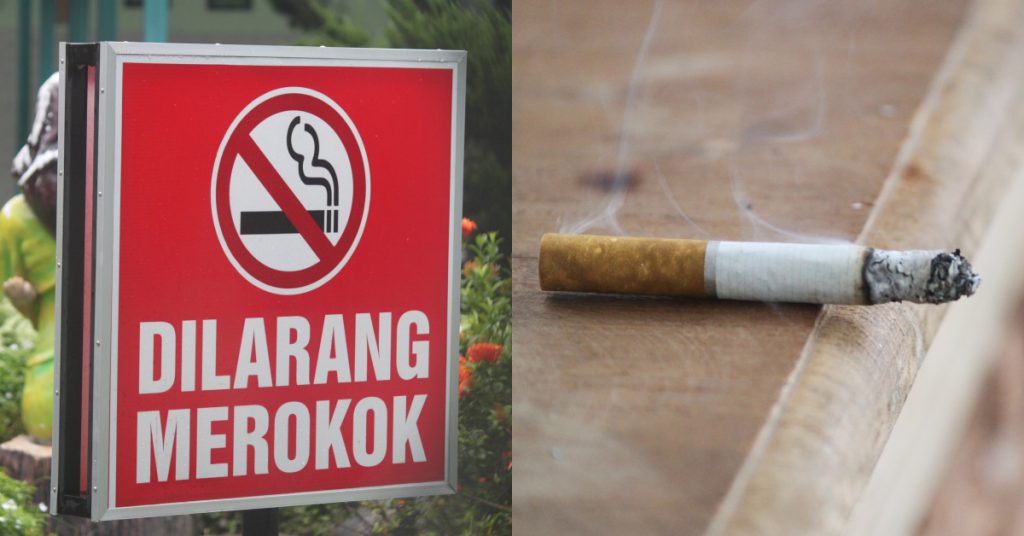Back in 2019, the government announced a blanket ban for smoking within all eateries, be it indoors or outdoors. In the early days of the ban, some were finding it hard to cope with the changes. News of fines was circulating and along with that, photos of people finding creative ways to circumvent the regulation.
However, these regulations were only applied to restaurants—and as restrictions ease and many of us start venturing out in public again, will we also see more smoking indoors or in public areas, crowded or not?
While this regulation was effective in reducing smoking at eateries, it often pushed smokers to nearby walkways instead. In the long-term, the only thing this does is make things uncomfortable for smokers and non-smokers alike.
Countries like Japan have adopted new regulations and laws to deal with rampant outdoor and indoor smoking, giving those who do not wish to breathe in second-hand smoke a choice for cleaner air.
Japan’s revised public smoking laws
Instead of just putting a blanket ban on smoking in F&B locations, Japan’s new anti-smoking law prohibits all indoor smoking, with a few exclusions such as private rooms and cigarette bars. This anti-smoking law effectively renders almost 84% of indoor restaurants in Japan as no-smoking zones.
However, some restaurants and facility owners can still allow smoking indoors, provided they adhere to specific regulations:
- Limit smoking to designated rooms
- No under 20s allowed in smoking-designated rooms
- Different signs must be shown clearer for what is permitted and not. For example, premises must prominently show “No Smoking, Designated Smoking Room or Smoking Area” signs.
- Must be smaller than 1,076 square feet or require smoking-designated rooms
Anyone found violating the regulations could face a fine of up to 300,000 yen (approx. RM11,282) for the smokers, and 500,000 yen (approx. RM18,804) for the owner of the facility. This puts the onus on the facility owners to ensure that no one is smoking on their premises or face punishment.
However, many Japanese citizens still find this new regulation inadequate, as more than half of the restaurants still allow for indoor smoking. Not to mention, because of the ban on indoor smoking, some have resorted to smoke outside near stations and in parks.
Note: In certain places in Japan, it is illegal to smoke while walking.

But this regulation does give everyone affected a choice. For smokers, they can choose to dine in smoking zones so they will not affect others. And those who do not wish to be affected by second-hand smoke could opt to not dine in restaurants that allow for smoking.
If Malaysia were to make similar changes like these, firstly the government would need to put in regulations for more designated smoking zones and stricter punishments for those who break the law.
Show clear indications of what type of devices can be allowed
Another benefit of the regulations is the need for clear signs of smoking or non-smoking zones. Both parties can visibly see if a restaurant has designated smoking zones or allows for smokers right before they enter.
In Japan, they take things a level further with different or more specific smoking signs. Some signs indicate/allow vaping only, heat-not-burn (HNB) devices only, or a mixture of both.
The Japanese government reinforced these regulations so that storefronts are responsible to clearly indicate what’s allowed in their premises. This change is also needed to cope with the rise of the usage of alternative smoking devices in their country. In 2019 alone, the use of HNB devices in Japan went up to 30% whereas the sales of combustible cigarettes dwindled by 43% in the last 5 years.

If we turn our attention to Malaysia, a 2019 National Health and Morbidity Survey (NHMS) pointed out that 21% of Malaysians who smoke are using traditional combustible cigarettes, whereas 5% (around 1 million people) have jumped onto e-cigarettes instead.
With that many people now using smoking alternatives, the government should also set up proper regulations for these users as they do function differently compared to combustible cigarettes.
New regulations to act as the first step to curb smoking
In the 2nd half of 2020, Japan’s government ran a new health survey and found that the male smoking rate had fallen to 28.8% which is a 2.3% reduction, compared to the survey they conducted back in 2016. Combined with the rise of HNBs in Japan as well as the pandemic and the ban on indoor smoking, many have either abandoned the habit or swapped to less harmful alternatives.
Locally, if regulations like the above were to take place, like adding more smoking zones in malls similar to KLIA or potentially setting up separate regulations for combustible cigarettes and HNB, Malaysia could also potentially see its numbers of cigarette smokers go down.

If the government were serious in their vision of realising Malaysia as a smoke-free nation come 2045, strict and specific regulations need to take place. By enforcing more targeted laws, these can help to change the habits of Malaysians who smoke, for the better.
Featured Image Credit: Mufid Majnun on Unsplash













